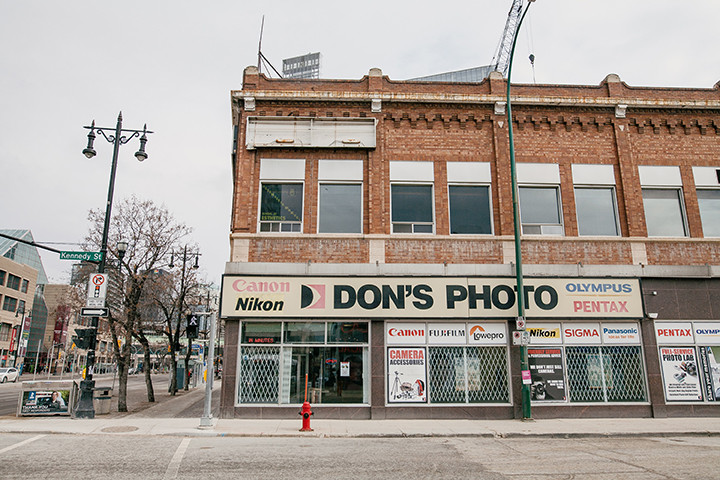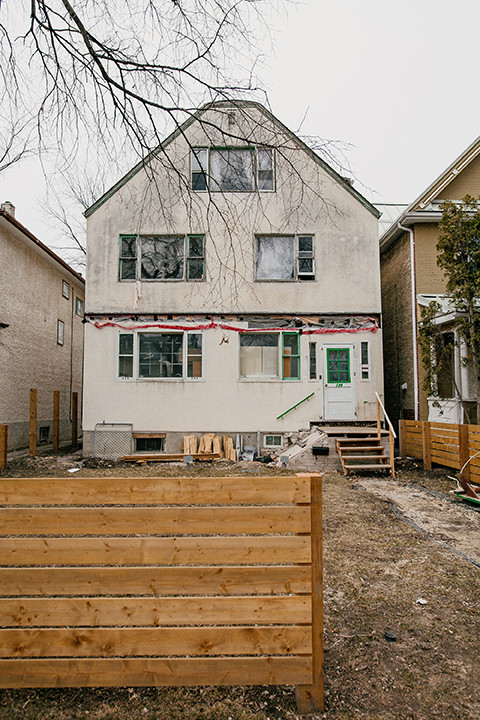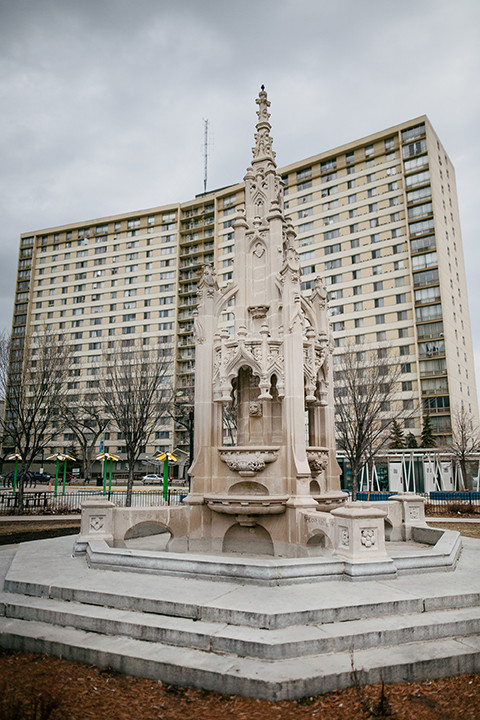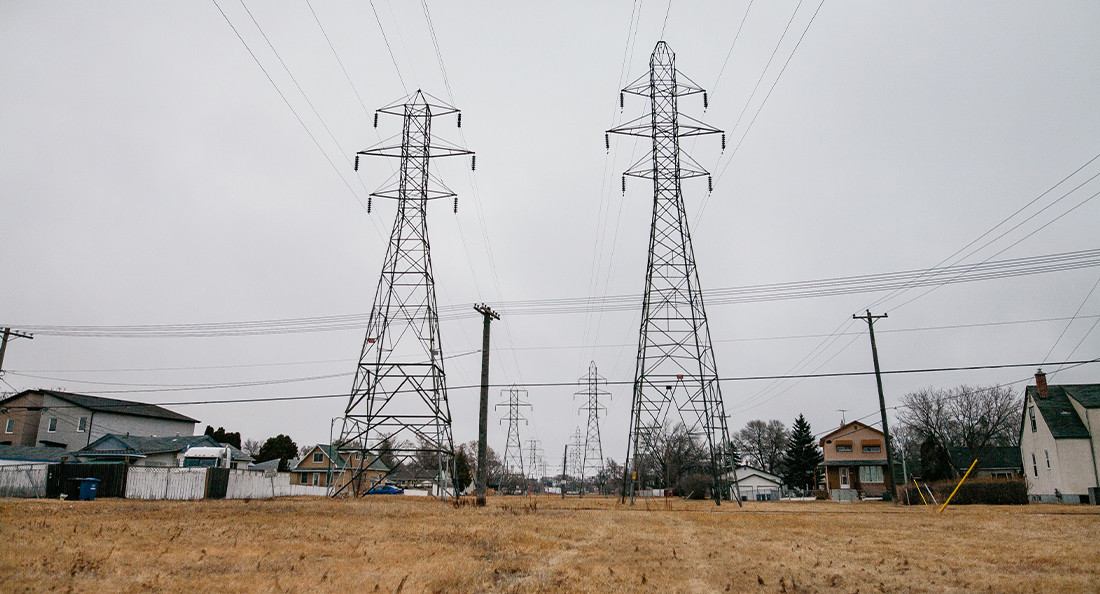Literary landscapes
Winnipeg as shaped by writing and writers
“Do you know,” said Dirk, “what my maiden aunt who lived in
Winnipeg used to tell me?”
“No,” said Richard.
—Douglas Adams, Dirk Gently’s Holistic Detective Agency
Winnipeg. Muddy Waters. The Peg. Winterpeg. This city is known by many names that encompass its features and flaws. Poets and novelists have created the concept of Winnipeg through words for more than 100 years, which have been read locally, nationally and abroad.
Authors like Carol Shields, Margaret Laurence, Miriam Toews, Joan Thomas and Gabrielle Roy have told stories about Louis Riel, the Winnipeg General Strike and our cultural centres like St. Boniface, the North End and the Wolseley neighbourhoods. These spaces have entered the national consciousness through the works of these writers, shaping the view of this Canadian city from afar and from within.
It may seem strange, but the concept of “Canadian literature” is incredibly young, born out of conversations sparked by the 1967 centennial about what it means to be Canadian and what Canadian art and culture looks like.
“Margaret Atwood was a major leader in that movement,” novelist and poet Catherine Hunter says. “She (wrote) a book called Survival: A Thematic Guide to Canadian Literature, where she talked about what Canadian literature is, but every darn person mentioned in the book is from the GTA (Greater Toronto Area). So when these upstarts in Manitoba began a writers’ guild, it was really exciting.”
It was anglophone organizations like the Manitoba Writers’ Guild (founded in 1981), Turnstone Press (1976) and Prairie Fire (1978) that bolstered generations of English-speaking writers from Winnipeg and Manitoba through publication, support and advocacy to create a provincial literary canon.
Franco-Manitoban literature, on the other hand, was born of the Quiet Revolution, the Quebec-founded movement away from the cultural domination by the Catholic church.
“We have managed to separate the use of the French language from it being a diktat of the church ... Language was free. We were happy to (finally) write about what we wanted,” Franco-Manitoban writer J.R. Léveillé says.
Théâtre Cercle Molière started to write and produce Winnipeg/St. Boniface-based plays “in a kind of street French” like Il Etait une Fois dans une Belle Plaine Plate, Léveillé says.
“The questions of assimilation and using English language mixing (were especially relevant) in the domain of the theatre, of writers and comedians. There was a sort of representation and reflection of the state of the Francophone community,” Léveillé says.
Today, in both English and French writing, there is a subtle delineation between rural and urban Manitoba writing. Léveillé says Prairie writing has “a way to conjure a sort of verticality, a forever extending horizon.” Perpetually urban Manitoban writers don’t always work with that form as much as writers with roots in rural Manitoba, Saskatchewan and Alberta, but they are still considered under the umbrella of “Prairie writing.”
“Most of (the Manitoba writers I grew up reading were) either from a reservation, small Mennonite town or an Icelandic fishing village,” Hunter says. “I was always a little ticked off to be called a Prairie poet when I’d never seen any grain elevators. We didn’t even have a car.”
As a crucial meeting place for Indigenous people from all over Turtle Island, Winnipeg is still reflected in literature to be a place people travel to from rural towns and conservative communities, and a place that still boasts a large Indigenous and Métis population.
Winnipeg is fortunate to have been mythologized by writers like Katherena Vermette, Tomson Highway and Joshua Whitehead.
Vermette is the award-winning author of North End Love Songs (winner of the Governor General’s Literary Award in poetry) and The Break (finalist for the Governor General’s Literary Award in fiction).
The title The Break refers to a section of Hydro-owned, undeveloped land that runs alongside McPhillips Street. Vermette’s writing often lovingly explores the culturally rich area of the North End, which is sometimes noted for its high rates of crime and poverty.
“The kind of poetry I write is very autobiographical and rather confessional. So it does become about me and where I come from and where I grew up,” Vermette says. “I’ve developed such a love for this place, in my adult life, particularly in the last few years where I've been doing a deep dive into Métis history, which is all here.”
Vermette names In Search of April Raintree by Beatrice Mosionier, which is about an Indigenous child in the foster-care system and is set in Winnipeg, as her favourite book because of the profound effect it had on her and how she saw her home.
“To see something of myself in literature was incredibly moving, because literature was, for many years, not made for people like me (as a Métis person), but also it was my city, so I knew where these places were. It was eye-opening in every way, like knowing that I could write about my experience,” Vermette says. As a child, she thought she had to write about New York, which is where all stories seemed to happen, but In Search of April Raintree changed that.
“I find there's so much diversity in this land, the diversity in places around the city. You really come to appreciate how much is here, how much history is here, how many stories are here,” she says.
Vermette’s graphic novel series A Girl Called Echo follows a modern-day Métis girl who goes back in time to the Red River Resistance and the Pemmican Wars. This historical period has inspired poets, novelists and playwrights from across Canada to write about Louis Riel and the resistance at the confluence of the Red and Assiniboine Rivers.
“There was a very conscious eradication effort that happened for Indigenous history, so the material culture and what’s left behind visually is very limiting,” Vermette says. “(Métis people) do have a history. We do have a story there, but I think there’s so many other Indigenous nations from this place here that don't have the luxury of still having that story.”
As material culture, Winnipeg-based literature not only creates an idea of Winnipeg, but also historicizes our city as it stands today – enriched by its diverse cultural communities, ancient roots and the new Winnipeg stories by Indigenous writers. In no way does this make up for what is lost. However, writing and publishing is a radical act of remembrance. It ensures that this version of Winnipeg will be remembered by the generations to come, and our cultural giants will live on in our collective memory.

Don’s Photo at the corner of Portage Avenue and Kennedy Street
You walk out of Don’s Photo and turn the corner.
Now you are expected to describe the weather: high
cranes over the avenue, jackhammer and drill,
another operation on the drugged body of the city.
Transplant, amputation, root canal. Multiple grids
of your hometown overlap in memory.
You pass the bookstore that was once
a music store, the empty lot that was
your father’s office. You pass the school
for ballet dancers that was once an old hotel
where you drank beer with Patrick, who once
was Patrick. And behind that hoarding
on the south side of the avenue, what belonged
there? The library’s been erased, redrawn.
A thin survivor crouches in the snow, baseball cap
in his bare chapped hand. And where’s Eaton’s?
You’ve been away. Or maybe
you’ve been sleeping. You’re waking
slowly in an unfamiliar place. You follow
the run-on line of river, crossed the renamed bridge,
carrying the envelope of photographs–traces
of your travels in the world beyond.
You pass the graveyard, burned out church,
and denoted abattoir. You’re coming home.
—An excerpt from Catherine Hunter's “Landmarks,” from her collection St. Boniface Elegies.

114 Spence St. from “A Directory of Enchanted Trash” by Joel Robert Ferguson.
So long safe haven, first home
found in young adulthood’s approximation
punk-house we all outgrew at last coming to rest
Thirteen years of handing off the lease
from friend to friend of friend and so on
comes down to this–
frantically gutting
the house in the final hours before the first of the month
sweating with the signatory in the damn Manitoban heat
for a sniff at the damage deposit
long after the last subletter skimped on cleaning,
split with hamster cage in hand
before the absentee landlord at last makes his appearance.
Someone always will, for someone must:
slap-patch wall-holes, re-set the doors
find a buyer to pick up both fridges for cheap
clean the wall of mirrors and the Doric column
put in by the old pianist who lived here previous.
—An excerpt from Joel Robert Ferguson’s “A Directory of Enchanted Trash,” from his collection The Lost Cafeteria.

Waddell Fountain in Central Park is mentioned by J.R. Léveillé in Le soleil du lac qui se couche.
Quelques jours plus tard, je me suis réveillée en sursaut. Non pas d’épouvante. Mais comme si l’éveil était venu de l’intérieur de mon rêve et m’avait propulsée dans le grand jour éclairé.
C’était sans doute en raison de ma promenade de l’avant-veille, car dans mon rêve la fontaine de pierre de Central Park, qui n’avait pas fonctionné depuis longtemps, jaillissait. Jaillir, c’est peut-être un peu fort. Elle coulait. Elle n’avait jamais rien fait d’autre que couler. Mais cet écoulement à la suite de son silence semblait une véritable projection.
A few days later I awoke with a start. Not because I was scared; it was as if the awakening had come from inside my dream and propelled me outward into the light of day.
No doubt it had something to do with my walk of the evening before, since in my dream water was shooting up from the fountain in Central Park. The fountain had not worked for a long time and shooting may be too strong a word. It was trickling. It had never done more than trickle. But this trickle, after such a long drought, seemed like a gush.
—from J.R. Léveillé's La soleil du lac qui se couche/The Setting Lake Sun. Les Éditions du Blé, 2011. Translation by S.E. Stewart provided by Signature Editions. A bilingual edition is available from Signature as an ebook.

The Break is a stretch of land west of McPhillips Street between Selkirk Avenue and Leila Avenue, which is mentioned in Katharina Vermette's work of the same name.
The Break is a piece of land just west of McPhillips Street. A narrow field about four lots wide that interrupts all the closely knit houses on either side and cuts through every avenue from Selkirk to Leila, that whole edge of the North End. Some people call it nothing and likely don’t think about it at all. I never called it anything, just knew it was there. But when she moved next door, my Stella, she named it the Break, if only in her head. No one had ever told her any other name, and for whatever reason, she thought she should call it something.
It’s Hydro land, was likely set aside in the days before anything was out there. When all that low land on the west side of the Red River was only tall grasses and rabbits, some bush in clusters, all the way to the lake in the north. The neighbourhood rose up around it. Houses built first for Eastern European immigrants who were pushed to the wrong side of the railway tracks, and kept away from the affluent city south. Someone told me once that North End houses were all made cheap and big, but the lots were narrow and short. That was when you had to own a certain amount of land to vote, and those lots were made just inches smaller.
—from Katherena Vermette’s The Break (House of Anansi Press)
Published in Volume 75, Number 23 of The Uniter (March 25, 2021)







